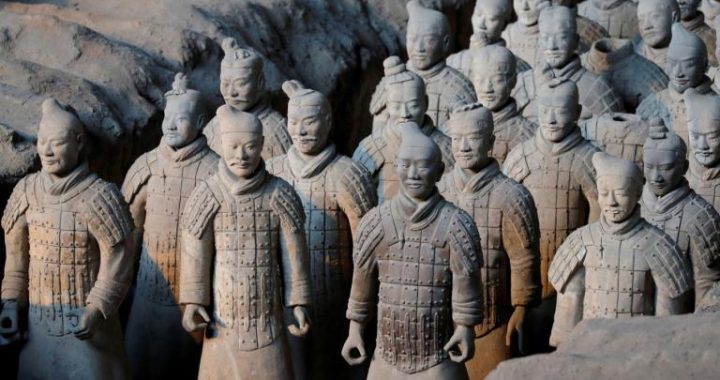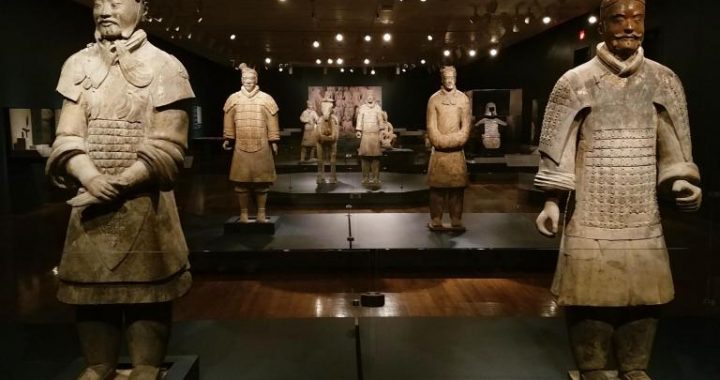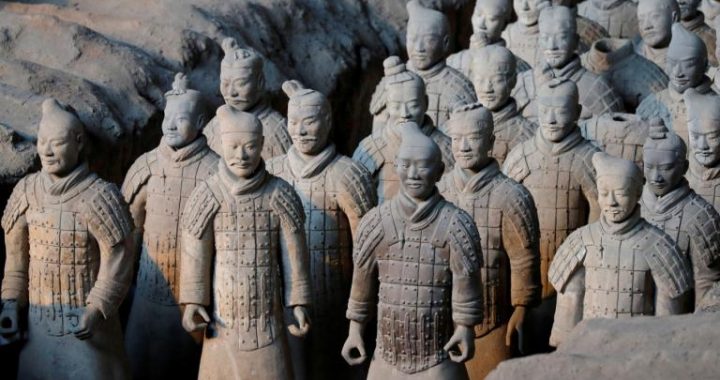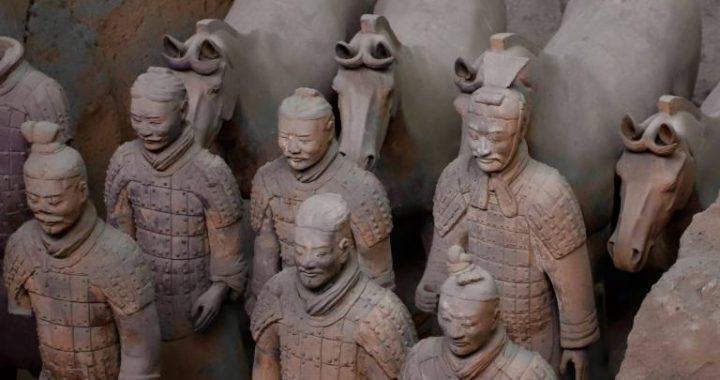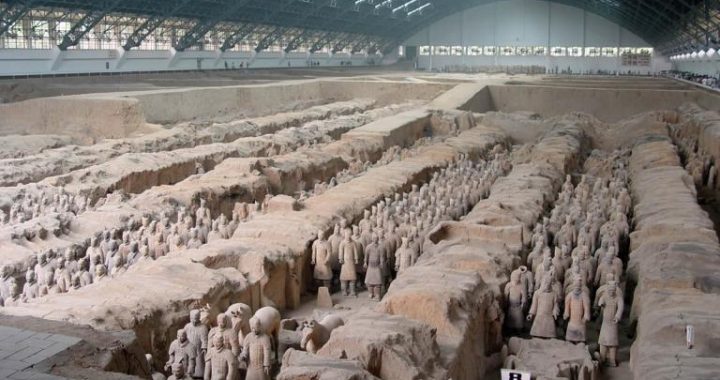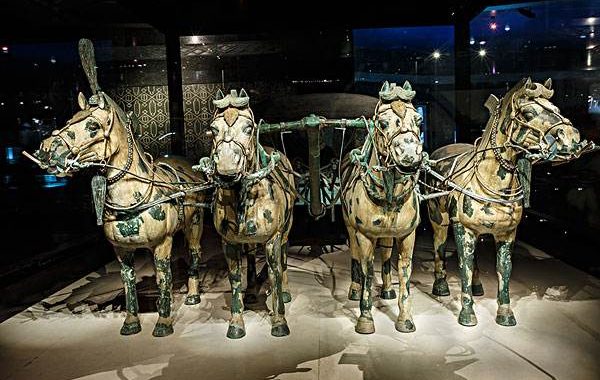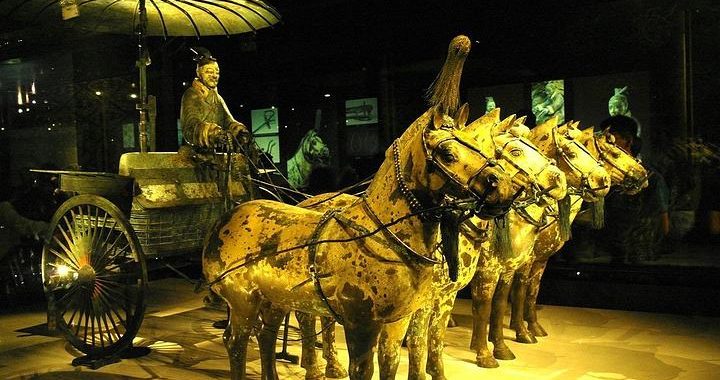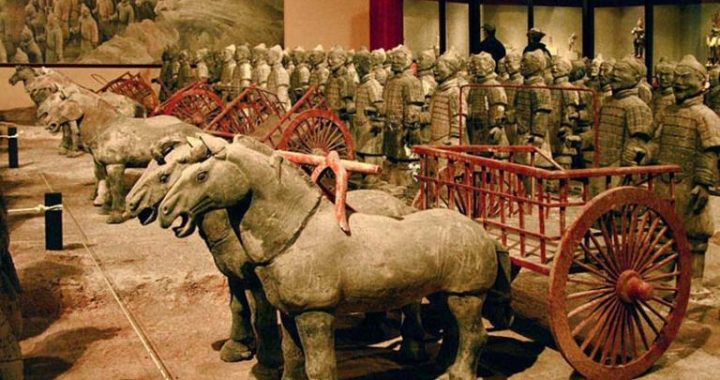The Figurines of Soldiers and Horses from the Qin Mausoleum
2 min read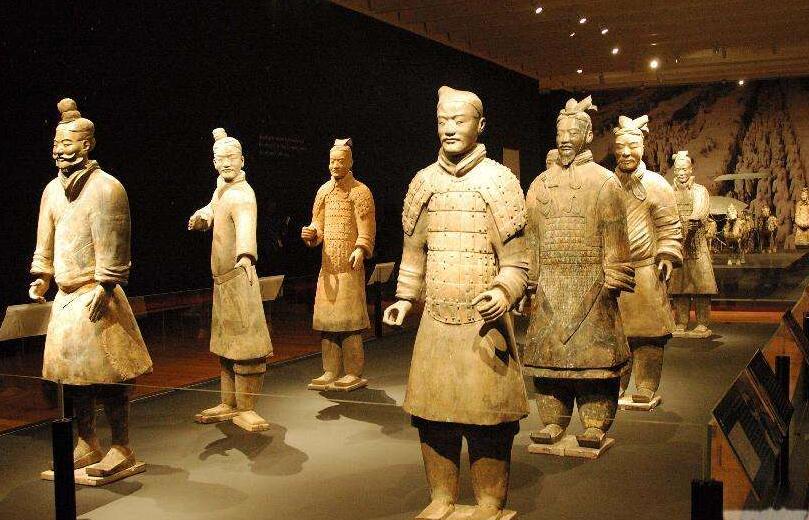
The Terracotta Army or the”Terra Cotta Warriors and Horses”,is a collection of terracotta sculptures depicting the armies of Qin Shi Huang, the first emperor of China. The figures,dating from 210 BC,were discovered in 1974 by some local farmers in Lintong District,Xi’an,Shaanxi Province,near the Mausoleum of the first Qin Emperor.

The figures vary in height,according to their roles,with the tallest being the generals. The figures include warriors,chariots,horses,officials,acrobats,strongmen and musicians. Current estimates are that in the three pits containing the Terracotta Army there are over 8,000 soldiers,130 chariots with 520 horses and 150 cavalry horses,the majority of which are still buried in the pits.
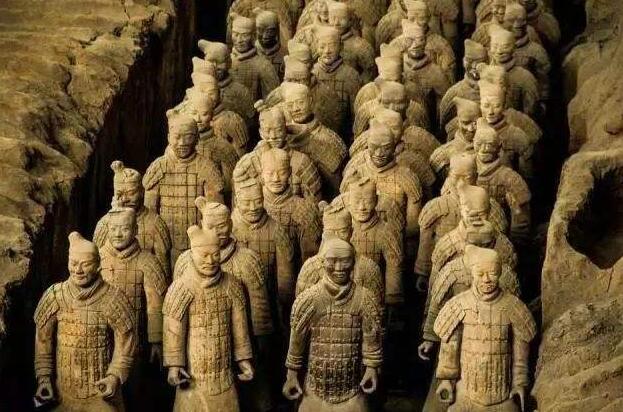
The Terracotta Army was discovered in the spring of 1974 in the eastern suburbs of Xi’an,Shaanxi Province by a group of farmers who were digging a water well 1.5 miles(2.4 km)east of Mount Li.The region around the mountain was riddled with underground springs and watercourses.In 195 B.C.,Liu Bang-the first emperor of the dynasty that followed the Qin Dynasty-had ordered that ‘twenty households’should move to the site of the mausoleum of the First Emperor of Qin to watch over the tomb.To this day,twenty villages sit in the immediate vicinity of the mausoleum,the terracotta army may have been rediscovered by the direct descendants of the people left to guard it.For centuries,there were reports of pieces of terracotta figures and fragments of the Qin necropolis-roofing tiles,bricks,and chunks of masonry-having been occasionally dug up in the area.This most recent discovery prompted archaeologists to investigate.The Terracotta Army is a form of funerary art buried with the First Emperor of Qin in 210-209 BC.The Army’s purpose was to help rule another empire with Qin Shi Huang in the afterlife.Consequently,they are also sometimes referred to as”Qin’s Armies.” The material to make the terracotta warriors originated on Mount Li.In addition to the warriors, an entire man-made necropolis for the emperor has been excavated.Up to 5 meters(16 feet)of reddish,sandy soil had accumulated over the site in the centuries following its construction,but archaeologists also found evidence of earlier,impromptu discoveries.During the digs at Mount Li,archaeologists found several graves from the eighteenth and nineteenth centuries,whose diggers had obviously struck terracotta fragments,only to discard them as worthless with the rest of the back-filled soil.
